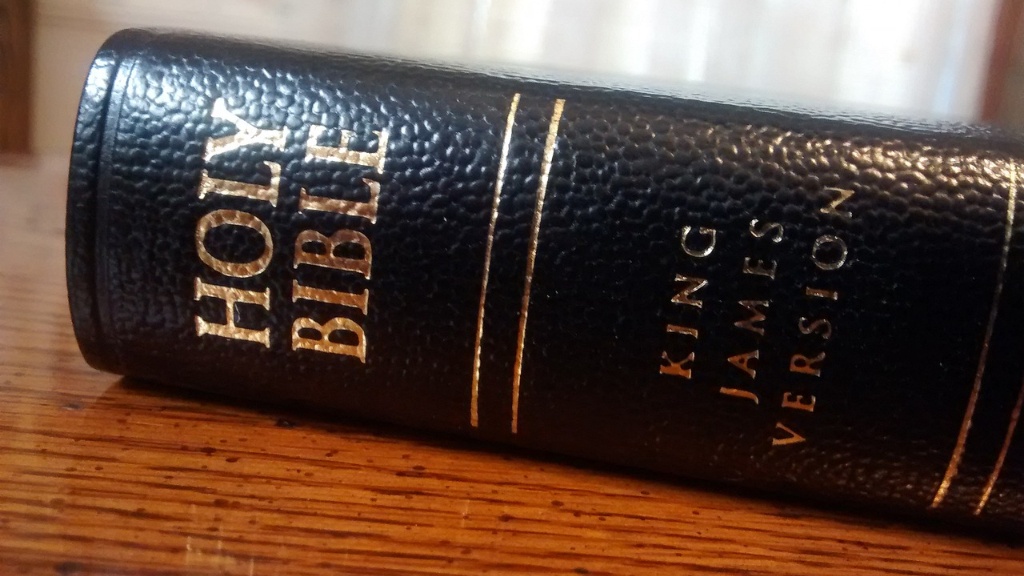The Tabernacle, or ‘Mishkan’ in Hebrew, is an ancient and sacred structure that appears throughout the Bible. It is of enormous spiritual and historical significance, being the main gathering place of the Israelites after their escape from Egypt.
The Tabernacle first appears in Exodus 25. The Lord God sent Moses to the top of Mount Sinai and gave Him explicit instructions on how to construct the Tabernacle, which would be comprised of three main parts: The Outer Court, Inner Court, and the Holy of Holies. Within the Outer Court, animals for sacrifice were slaughtered and congregational prayers were offered. The larger Inner Court was the main meeting place for the Israelites as well as the standing place for the priests. In the very center lay the Holy of Holies, a sacred space where only the High Priest could enter during specific festivals.
The Tabernacle was a mobile structure, and was accompanied on its long journey with the Israelites. It was constructed out of wood and canvas covered in goatskin and tribal fabrics, and decorated with intricate carvings and silver ornaments. It was also lined with precious metals, such as gold and silver, to create a solid base for the Tabernacle’s contents.
The most significant component of the Tabernacle was the Ark of the Covenant. This was a gold covered wooden box, decorated with ornamental carvings, that held the sacred tablets inscribed with the Ten Commandments. In addition to the Ark of the Covenant, the Tabernacle would also contain furs, censers and various other religious items.
The use of the Tabernacle was wide-ranging. It was not only used for religious rituals and purpose, but also as a place of refuge and protection. Throughout the Bible, the Tabernacle is referred to as a home for the Lord. For example, in Exodus 25:8, the Lord says, “Let them make Me a sanctuary, that I may dwell among them.” This idea of the Tabernacle being a home to the Lord symbolizes the presence of God’s presence with the Israelites, a reminder of His covenant with them, and a sign of protection.
Also significant is the Tabernacle’s role as a spiritual center to the Israelites. As mentioned previously, it was the main gathering place for prayer and worship. This symbolizes the importance of faith to the Israelites, as everything in the Tabernacle was devoted to glorifying God. In Exodus 27:16, it states that “at the entrance of the Tent of Meeting, no man shall come near; for the Lord is there.” This exemplifies and reinforces the holiness of the Tabernacle, and its power to bring the Israelites together and foster their faith.
The symbolic religious significance of the Tabernacle was also reflected in its physical design. For example, the outer court was in the form of a rectangle, symbolizing a wall surrounding the entire Tabernacle. The Altar of Sacrifice was in the form of a square, representative of the four corners of the world, the four elements and the perfect equilibrium of Christ. The walls of the Inner Court were designed to be curved, symbolizing the undulation of waves and the journey of the Jews towards the Promised Land. The columns at the entrance of the Tabernacle, as well as the numerous other artistic details, contain hidden symbols of Jesus Christ and his crucifixion.
Materials used to build the Tabernacle
In order to build the Tabernacle, the Lord commanded Moses to instruct the Hebrews to donate materials for construction. In Exodus 25, God stated that “the people of Israel must bring Me a generous freewill offering…” The materials used for the Tabernacle’s construction included timber and precious metals, such as gold, silver and copper. The Israelites were also instructed to bring animal hides and dyed fabrics with which to cover the structure. All of these materials were donated by various members of the community as a token of their faith and reverence to God.
The timber used for the Tabernacle came from the acacia tree, which was abundant in the Middle Eastern region. The acacia tree has dense and durable wood, symbolic of the everlasting strength of God and His covenant with the Israelites. Meanwhile, the gold and silver came from the silver and gold mines of Egypt, as the Egyptians were in possession of a great wealth of these precious metals. The fabrics and animal hides were also brought from Egypt, as well as other neighbouring countries, reflecting the diverse culture of the region and the multiculturalism of the ancient world.
Significance of the Tabernacle
The Tabernacle is of immense spiritual and historical significance to Judaism and Christianity today. The structure represents the continuation of the covenant between God and the Israelites, and symbolizes the importance of faith and reverence to God. It is also a physical reminder of the commitment of the Israelites to God during their exodus from Egypt, and their long and arduous journey to the Promised Land.
The Tabernacle is mentioned throughout the Bible, and is often compared to the heavenly temple, as the Tabernacle was the closest structure that the Israelites had to the heavenly temple. The Tabernacle was also regarded as a prototype for the Temple of Solomon in Jerusalem, and this resemblance may have had a deep spiritual significance to the Jewish people.
Despite its age and external simplicity, the Tabernacle was a complex and powerful structure that was pivotal throughout the Bible. The significance of the Tabernacle lies not only in its religious importance, but also its vast cultural and historical significance. In its time, the Tabernacle exemplified the commitment and faith of the ancient Israelites, and to the present day it remains a powerful spiritual reminder for the devout.
Perspectives from experts
The importance of the Tabernacle is reflected in various perspectives from experts. For example, archeologist and professor Fustat Fareed believes that the Tabernacle presented a crucial point of connection between Rome and Jerusalem, and it was “a potent symbol of both Jewish and Roman identity.” This demonstrates the Tabernacle’s importance to the larger cultural picture of that time.
Historian Allana Gonzales further adds that “the Tabernacle was a symbol of hope for the Israelites. It was a reminder of their faithfulness and commitment to God and it represented the loyalty of the Israelite people.” This highlights the emotional weight of the Tabernacle, and how it served as a symbol of redemption and hope during the tumultuous times of the ancient world.
Religious scholar Rabbi Eli McCloud thinks that “the Tabernacle is a sublime embodiment of the collective energy and will of the Hebrews. It encapsulates the integrity of faith, dedication and progress. It is a powerful reminder of the most sacred moment in Jewish history.” This further emphasizes the spiritual power of the Tabernacle.
All in all, these perspectives demonstrate the profound impact of the Tabernacle to Jewish culture, faith, and history.
My Analysis
The importance of the Tabernacle in the Bible cannot be overstated. In a time when all other places of worship were controlled by the oppressive forces of Rome, the Tabernacle was a beacon of hope, faith, and freedom for the ancient Israelites. It contained the Ten Commandments, the source of divine guidance for the Hebrews, and was the centre of congregation and ritual practice for the Jews.
In addition to being a religious centre, the Tabernacle was also a symbol of hope and resilience for the Israelites during their long and arduous journey to the Promised Land. It was a place of refuge, where the hope that the Israelites once held in the wilderness could be sustained and preserved. The architectural design of the structure is full of symbolic meaning, representing the harmonious and equitable state of Christ, the four elements, and the journey of the Jews towards freedom.
The Tabernacle was also significant in its physical construction, as all the materials used to build it were donated by the community. This demonstrates the support of the Israelites for the Tabernacle, and the unwavering faith and reverence that they held for God. This same faith and reverence is still evident amongst the Jewish people today, and the Tabernacle is still remembered as a powerful symbol and reminder of the covenant between God and His people.
Historical Context
The Tabernacle was constructed during the Second Temple period, which spanned from 515 BCE to 70 CE. This period is an important moment in Jewish history, as the Hebrews were recently freed from the clutches of the Egyptian empire and were searching for a new sense of identity. In such turbulent times, the construction of the Tabernacle allowed the Jewish people to reconnect with their faith and affirm their commitment towards God.
The Tabernacle’s historical context also extends to the political environment of the ancient world. As mentioned previously, the Romans had a firm grip on the region and often sought to suppress neighbouring faiths. The Tabernacle was a sign of defiance for the Israelites, who, despite the occupation of Jerusalem, were still able to retain their culture, faith and autonomy. The significance of the Tabernacle was all the more enhanced during this period, as it served as a symbol of hope and resilience for the Jewish people.
Cultural Significance
The Tabernacle is an important part of modern Jewish culture, contributing to the spiritual and artistic legacy of the Jewish people. Jewish artist, performers, and other visual creators have often taken inspiration from the structure and its contents to create artwork that conveys the power and beauty of the Tabernacle. This artwork has often served to heighten the appreciation of the cultural importance of the Tabernacle, as well as its spiritual significance to the Jewish faith.
Additionally, the Tabernacle is also remembered in churches, synagogues and other holy sites. Its presence serves to reinforce the notion that the Church and Synagogue are spiritual homes to many people, and offer solace, in the same way the Tabernacle once did. This makes the Tabernacle a unique reminder of the timelessness of faith and the everlasting nature of the covenant between God and His people.
Interpretations
Throughout the Bible, the Tabernacle has been interpreted in various ways. Different faith interpretations have often emphasised different aspects of the structure, such as its physical design, religious significance or spiritual power. Biblical scholars have also started to focus on the cultural aspects of the structure, like its influence on Jewish ritual activity, its role in the rise of Christianity and the effect it had on the art and culture of the region.
Moreover, interesting interpretations on the symbolism of the Tabernacle have been made in recent times, including an emphasis on the symbiotic relationship between God and humans. Philosophers such as Emmanuel Levinas believe that God is always present amongst the Israelites, and that the tabernacle





